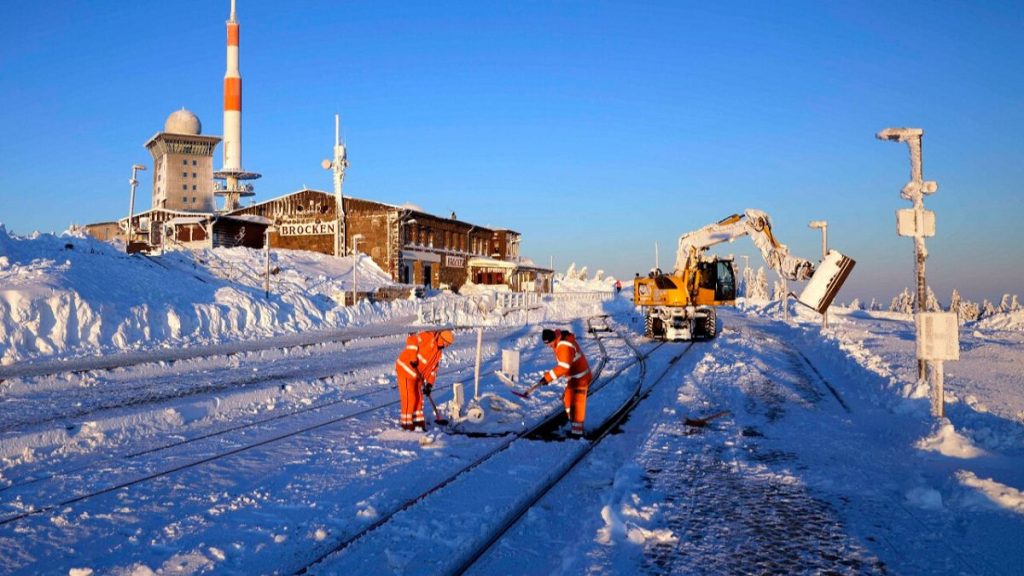Southeastern Europe has been gripped by an unexpected wave of frigid temperatures this week, resulting in heavy snowfall, treacherous travel conditions, and the looming threat of flooding in some areas. This unusual cold snap has disrupted daily life across the region, impacting countries such as Albania, Bosnia and Herzegovina, Croatia, Greece, Italy, Montenegro, North Macedonia, and Slovenia. The storm system responsible for this weather event brought not only heavy snow to mountainous regions but also strong winds and substantial rainfall, creating a multifaceted challenge for residents and authorities alike.
The heavy snowfall caused significant disruption to transportation networks and access to essential services. In Albania, over 70 schools were forced to close their doors on Monday due to impassable roads blocked by snowdrifts, isolating several villages. Authorities mobilized to clear snow-covered roads and restore traffic flow in the northern and southeastern regions of the country. Similar scenes unfolded in Bulgaria, North Macedonia, and Italy, where heavy snow alerts were issued, highlighting the widespread impact of this unseasonal weather event. Bulgaria’s Smolyan region saw snow accumulations reaching 40 centimeters, leading to hazardous driving conditions and even accidents, such as the collision of two trucks at the Predel Pass, requiring snow-clearing equipment for removal.
North Macedonia also experienced significant challenges due to the heavy snowfall. Authorities in the Prilep region imposed restrictions on cargo vehicles to ensure safety and manage the difficult road conditions. While the situation on regional roads was described as complicated, local traffic authorities reported that it remained under control thanks to the continuous efforts of emergency crews, who worked tirelessly for over 36 hours to combat the effects of the snow. These efforts underscore the dedication and resilience of local authorities in responding to this unexpected weather crisis.
The impact of the cold weather extended beyond transportation disruptions. Higher altitude areas experienced significant snowfall, including municipalities above 800 meters in Italy’s Puglia region, particularly in mountainous locations like Faeto and Monteleone within the province of Foggia. This unusual snowfall was attributed to a wave of cold air originating from northeastern Europe, which exacerbated weather conditions in the region. Meanwhile, lower altitude areas faced a different threat: flooding. Sicily issued a yellow alert on Tuesday due to heavy thunderstorms predicted to affect the entire island, signaling the potential for widespread disruption and damage. This stark contrast in weather impacts highlights the complex and varied effects of this cold snap across Southeastern Europe.
The widespread nature of this cold weather event extends beyond Southeastern Europe, impacting much of the continent and is expected to persist throughout the week. France, for instance, issued an orange flood warning for its northern regions, while avalanche alerts were in place across the western Alps, reflecting the wide range of hazards presented by this unusual weather pattern. This broader context underscores the significance of this cold snap and its potential for widespread disruption across Europe.
Interestingly, while much of Europe shivers under this unexpected cold wave, the Nordic region is experiencing unusually mild temperatures. Helsinki, for example, is forecast to reach an average temperature of 3°C on Thursday, a remarkable 8°C above the norm. This stark contrast in temperatures across the continent further emphasizes the unusual nature of this weather event. The European Environment Agency (EEA) previously warned in December that climate change was contributing to increasingly extreme weather patterns across Europe, including severe cold spells. This recent cold snap serves as a stark reminder of the EEA’s warning and the potential for further extreme weather events in the future.










